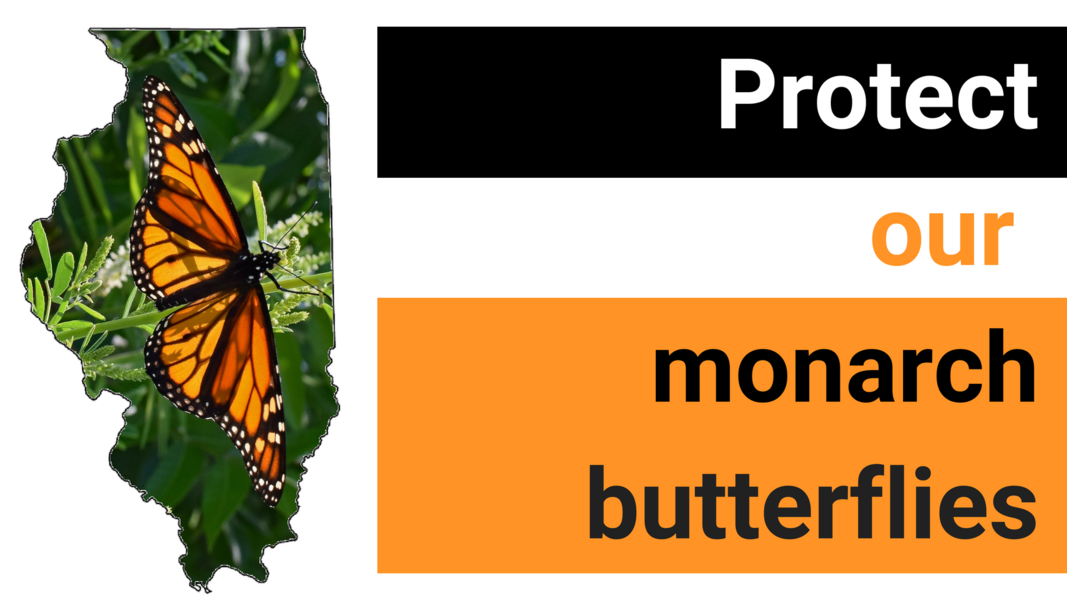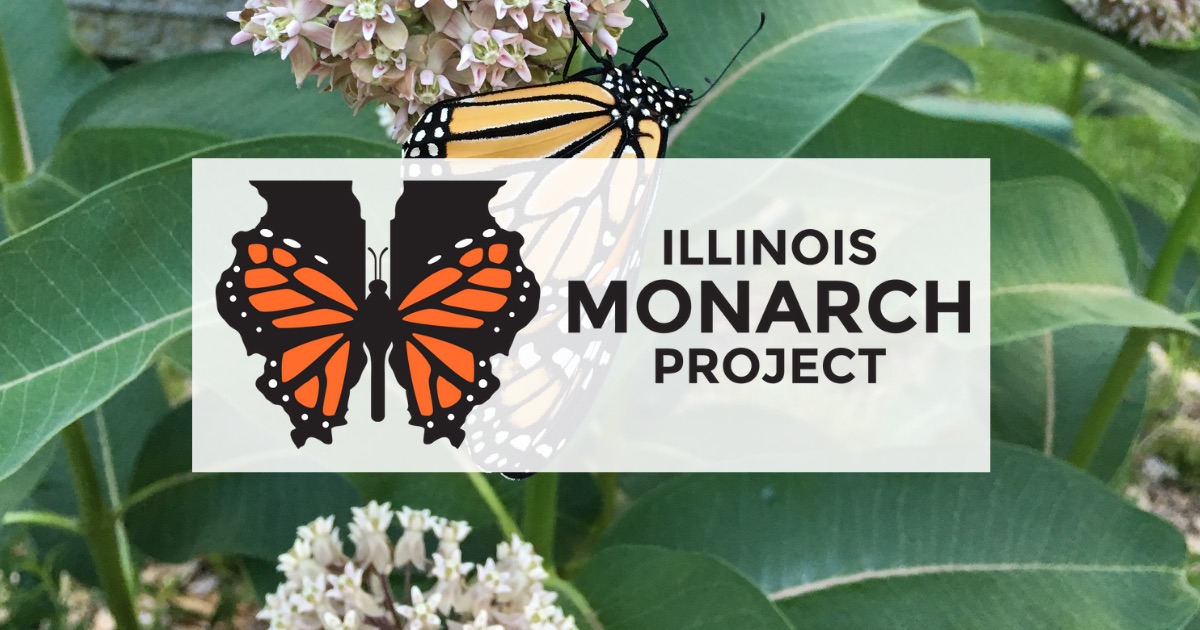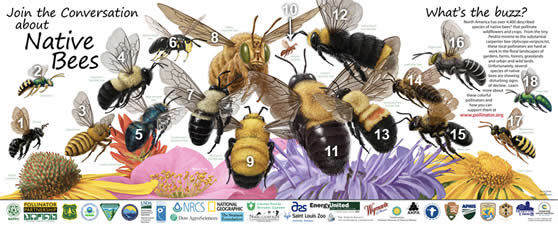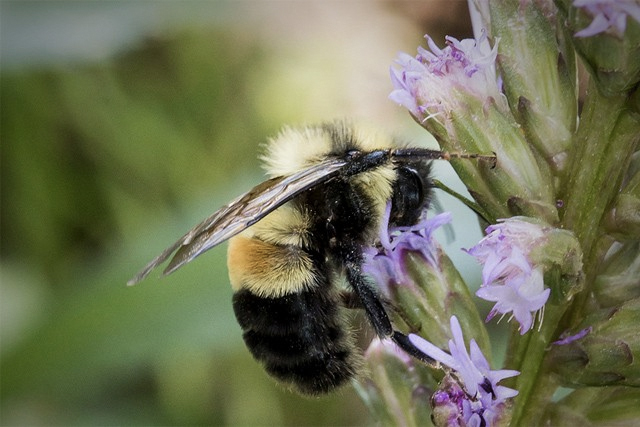Take the Pledge! Join us as we get to work making Illinois a safe haven for monarchs on their journey. Take the Illinois Monarch Pledge today! And, join your local Sierra Club Group Monarch Team.
Monarch butterflies are one of the many insects included in the class of organisms that we call pollinators -- creatures that pollinate over 75% of our flowering plants and nearly 35% of the word's food crops. According the to USDA Natural Resource Conservation Service more than 3,500 species of native bees help increase crop yields. Some scientists estimate that one out of every three bites of food we eat exists because of animal pollinators like bees, butterflies and moths, birds and bats, and beetles and other insects.
Pollinators face many challenges, and many are on the decline because of habitat loss, pesticides, disease and parasites. The iconic monarch butterfly is one such species that's in trouble.
 Monarchs
Monarchs
Be part of the super generation to Save the Monarchs! Take the Pledge!
Join your local Sierra Club Group Monarch Team!
Monarch butterflies inspire us with their fragile beauty. For their amazing annual migration, they have long traveled thousands of miles, across several generations, somehow finding their way through weather and predators. But now habitat loss, pesticides and climate change may be too much for them.
In 2015 Illinois declared the monarch a species of greatest concern, and the Midwest Association of Fish & Wildlife Agencies (MAFWA) began a 20-year plan for monarch conservation in Illinois.
According to Illinois Department of Natural Resources in 2016, monarch butterfly populations had declined by as much as 80 percent over the previous two decades.
In 2017, Ilinois Sierra Club introduced and passed legislation designating milkweed as the Illinois State Wildflower. Native milkweed is essential to monarch survival as it the only species of plant that monarch larva feed on.
A critical flyway for Monarch butterflies, Illinois has been designated as a high priority area for monarch conservation in strategies developed both by the U.S. Fish and Wildlife Service and the U.S. Department of Agriculture’s Natural Resources Conservation Service.
The Monarch is Illinois' state insect, but we need to do more to support these creatures and other valuable pollinators. the Sierra Club is working to make the Prairie State better for monarchs and to help them continue their wonderful journey long into the future. Our key strategies to help Illinois monarchs and all insect pollinators include:
 Support the Illinois Monarch Project. The foundational tenets of the IMP include:
Support the Illinois Monarch Project. The foundational tenets of the IMP include:
-
Establishing a long-term action plan to enhance monarch butterfly reproduction and survival in Illinois
-
Engaging all hands on deck by partnering within the agriculture, rights-of-way, urban, and natural land sectors
-
Promoting and supporting voluntary conservation action by private landowners
-
Supporting regional, national, and international monarch butterfly conservation strategies
- Download the Action Plan HERE!
-
- Advocate for critical Monarch habitat with new public lands like the Hackmatack and Kankakee National Wildlife Refuges, and continuing restoration at the Midewin National Tallgrass Prairie and other sites.
- Develop policy to reduce and eliminate the use of toxic pesticides that are lethal to pollinators and the plants they depend on.
- Collaborate on statewide policy to increase pollinator habitat on public and private land from farmland to urban areas to roadside rights of way.
- Sierra volunteers across the state host and/or participate at educational events and festivals that promote planting native species, especially milkweeds, in yards, farms, rights of way, and other places available to support monarchs.
Illinois Monarch Resources
- Informational handout available in English and Spanish!
- Join us on Facebook! Learn and post about events across the state!
- Volunteer to help monarchs. Fill out the Volunteer Interest Survey to find out how you can help in your area. Check the "Other" box and write in Join the Monarch Team (read Illinois Monarch Team campaign plan here.)
- Support the Illinois Monarch Project! Download the ACTION PLAN! Take the Illinois Monarch Project PLEDGE!
- DuPage Monarch Project is a partnership of the Forest Preserve District of DuPage, Sierra Club’s River Prairie Group, The Conservation Foundation and Wild Ones Greater DuPage Chapter with a mission of supporting monarch conservation by advocating for municipal resolutions or pledges and encouraging residents, businesses, schools and churches to plant monarch gardens.
- Friends of Hackmatack National Wildlife Refuge works with multiple partners and US Fish and Wildlife Service Chicago Field Office to install eight site plantings of monarch/pollinator plants with multiple partners, including Sierra Club volunteers.
- Green Community Connections works to build a sustainable future in the Oak Park/River Forest area of Cook County.
- Let us know about local efforts in your area to protect monarchs and their habitat.
Resources
- Illinois Monarch Project Resources
- Post a Monarch/Pollinator event on our Monarch Campaign Facebook Page - if you know of an program, plant sale, or other event that focuses on Monarchs and/or pollinators, post it on our Facebook page.
- Monarch Mania! is a project of the Illinois Department of Natural Resources.
- North American Monarch Conservation Plan
- U.S. Fish & Wildlife Service - Save the Monarch
- Monarch Joint Venture-good resource for creating habitat.
- Illinois Butterfly Monitoring Network - get involved in citizen science
- IDNR Mason State Nursey - native seeds and plants for sale
- Natural Areas Journal: Managing for Pollinators - addresses the need for more knowledge about pollinators in natural landscapes, which are vital to sustaining the majority of ecological services. It offers crucial pollinator and native plant conservation tools, as well as the latest research, concepts, and best management practices.
- Growing Milkweed for Monarch Conservation - NCTC Webinars Series/Monarch Butterfly Conservation; explains harvesting and planting milkweed seeds.
Pollinators
Plants require pollination to reproduce. People and other animals reap the benefits of plant reproduction in the form of food. Some of the most important pollinators in our food system are bees. The most well-known bee pollinator is the honey bee. Ninety-five varieties of fruits and other foods that we enjoy depend on pollination by honey bees. Of the seven species of honey bee recognized the best known is the European honey bee (Apis mellifera) which has been domesticated for honey production and crop pollination. However, honey bees represent only a small fraction of the thousands of known species of bees.
Native Bees

There are over 4,000 species of bees native to North America, 50 of which are bumble bees. The largest bee family is the family Apidae. It includes a wide variety of native bee species, and as well as the nonnative honey bee. The name of the family comes from the Latin name for the honey bee, Apis. It includes all the bumble bees, carpenter bees, and some species of cuckoo bees. Stingless bees and orchid bees that are found in the tropics also belong to this family. See Bee Basics: An Introduction to Our Native Bees, published by the U.S.D.A. Forest Service for an interesting and comprehensive look at our fascinating native bees.
Rusty Patched Bumble Bee

Bees everywhere are dying. But while most of the attention has been on domesticated honey bees, wild bees are struggling too.
The rusty patched bumble bee used to be found across the eastern United States, but its range has declined by about 91% since the 1990s.1
References:
1. Parham, G. (21 September 2016). "Service Proposes Protections for Rusty Patched Bumble Bee Under Endangered Species Act." Fish and Wildlife Service.
2. (accessed 14 October 2016). "Bumble bees: rusty patched bumble bee (Bombus affinis)." Xerces Society for Invertebrate Conservation.
3. (22 September 2016). "Endangered and Threatened Wildlife and Plants: Status for Rusty Patched Bumble Bee." Fish and Wildlife Service.
4. Jepsen, S. et al. (2013 January 31). "Petition to List the Rusty Patched Bumble Bee as an Endangered Species Under the U.S. Endangered Species Act." The Xerces Society for Invertebrate Conservation.
5. Zuckerman, L. (22 September 2016). "Rusty patched bumble bee proposed for U.S. endangered species status." Reuters.
Photo Credit: Tony Ernst / CC BY-NC-SA 2.0